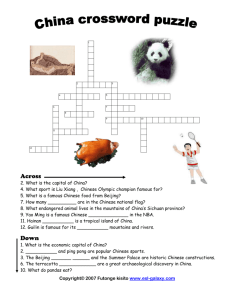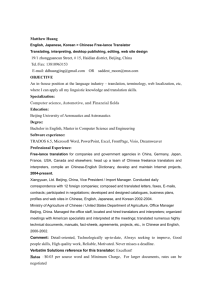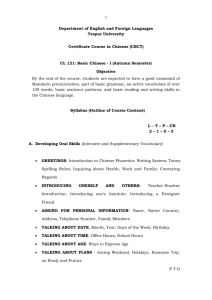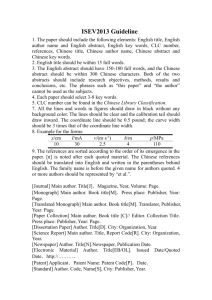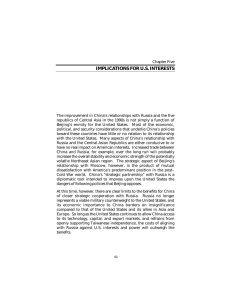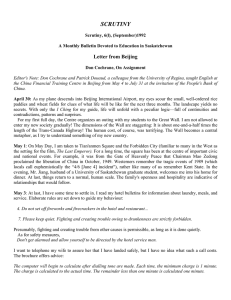CHAIRMAN HUNTER OPENING STATEMENT HOUSE ARMED SERVICES COMMITTEE DUNCAN HUNTER – CHAIRMAN
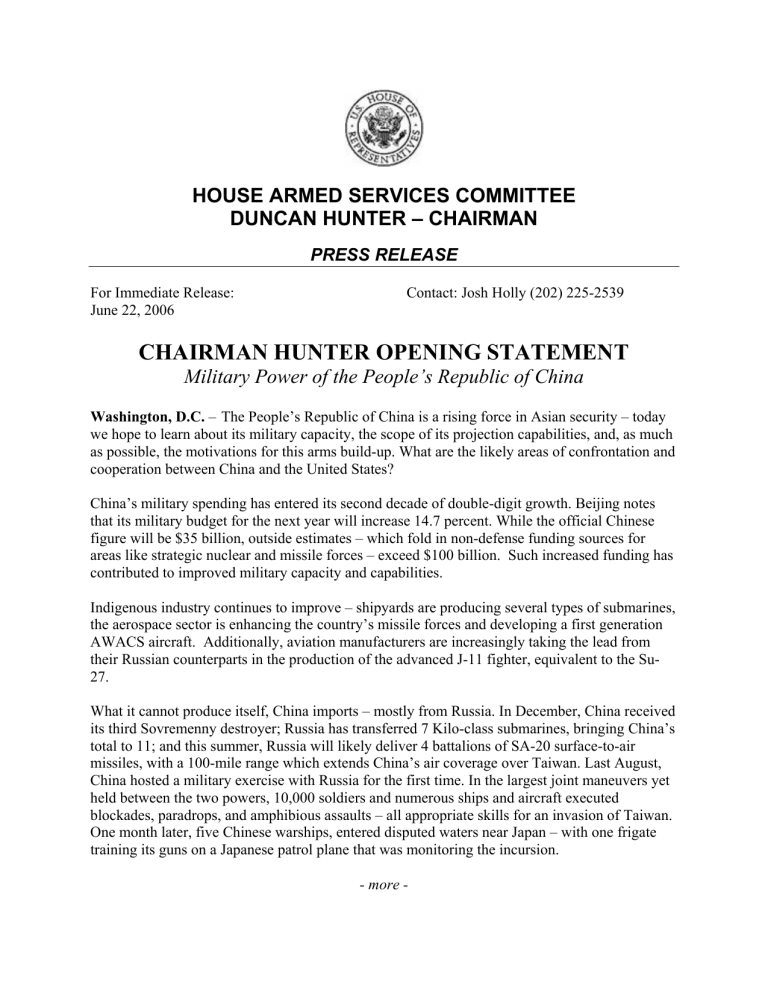
HOUSE ARMED SERVICES COMMITTEE
DUNCAN HUNTER – CHAIRMAN
PRESS RELEASE
For Immediate Release:
June 22, 2006
Contact: Josh Holly (202) 225-2539
CHAIRMAN HUNTER OPENING STATEMENT
Military Power of the People’s Republic of China
Washington, D.C.
– The People’s Republic of China is a rising force in Asian security – today we hope to learn about its military capacity, the scope of its projection capabilities, and, as much as possible, the motivations for this arms build-up. What are the likely areas of confrontation and cooperation between China and the United States?
China’s military spending has entered its second decade of double-digit growth. Beijing notes that its military budget for the next year will increase 14.7 percent. While the official Chinese figure will be $35 billion, outside estimates – which fold in non-defense funding sources for areas like strategic nuclear and missile forces – exceed $100 billion. Such increased funding has contributed to improved military capacity and capabilities.
Indigenous industry continues to improve – shipyards are producing several types of submarines, the aerospace sector is enhancing the country’s missile forces and developing a first generation
AWACS aircraft. Additionally, aviation manufacturers are increasingly taking the lead from their Russian counterparts in the production of the advanced J-11 fighter, equivalent to the Su-
27.
What it cannot produce itself, China imports – mostly from Russia. In December, China received its third Sovremenny destroyer; Russia has transferred 7 Kilo-class submarines, bringing China’s total to 11; and this summer, Russia will likely deliver 4 battalions of SA-20 surface-to-air missiles, with a 100-mile range which extends China’s air coverage over Taiwan. Last August,
China hosted a military exercise with Russia for the first time. In the largest joint maneuvers yet held between the two powers, 10,000 soldiers and numerous ships and aircraft executed blockades, paradrops, and amphibious assaults – all appropriate skills for an invasion of Taiwan.
One month later, five Chinese warships, entered disputed waters near Japan – with one frigate training its guns on a Japanese patrol plane that was monitoring the incursion.
- more -
China is also pursuing security cooperation and trade relations with other nations. Beijing continues to call for the European Union to lift its arms embargo, which has been in place since the 1989 crackdown on democracy protestors in Tiananmen Square – and these calls may unfortunately be resonating within key European capitals as the Chinese military appetite increases.
Moreover, its expanding economy has pushed China’s interests beyond Asia. To meet the growing demand for energy, China has partnered with uncooperative states including Iran and
Venezuela. In Sudan, China pours money into the oil industry; the Sudanese government uses the proceeds to purchase arms from China. Beijing has also used the Shanghai Cooperative
Organization – a regional security organization that involves several nations friendly to the
United States – to pressure the U.S. government to withdraw American forces from Central Asia.
There is certainly positive potential for cooperation between the United States and China – indeed, the commander of U.S. forces in the Pacific, Admiral William Fallon, recently said that
China and the United States could “solve some of the problems that abound in the region.” Such areas may include maritime security, non proliferation, and confidence-building measures to create and strengthen bonds between Chinese and U.S. military personnel. For example, Admiral
Fallon has invited Chinese officials to observe two U.S.-led exercises this summer.
Despite these opportunities, several questions remain regarding Beijing’s intentions and continued arms build-up. Why does China continue to augment forces near the Taiwan Strait?
Why does it acquire weapons systems with regional and global range? These actions threaten
Pacific stability which American forces have ensured, in times of peace and war, for the past six decades.
### http://armedservices.house.gov/
